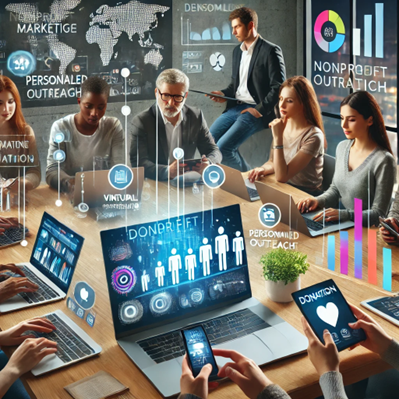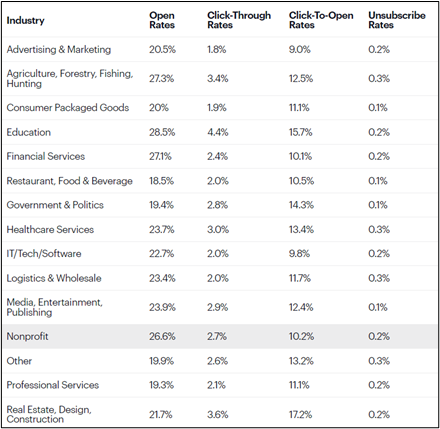In 2025, nonprofits are faced with a unique challenge – making a big impact with limited resources. Does this sound like your organization?
If so, you’re in the right place. Just because your mission isn’t profit-driven doesn’t mean you can’t reap the benefits of effective marketing. From raising awareness to driving donations, the right strategies can amplify your cause and help you connect with the people who care most.
Whether you’re a small grassroots organization or a large foundation, employing the right strategies can make all the difference.
This blog dives deep into some of the key strategies for marketing a non profit to foster growth, retain donors, and amplify their mission.
Marketing Strategy for Nonprofit Organization
1. Understanding the 2025 Nonprofit Landscape

In 2025, donor expectations have evolved. 85% of donors want to know how their donations are being used and prefer regular updates on their contributions. As donor priorities shift toward transparency and accountability, nonprofits must adapt by being open about their financials, impact, and the outcomes they achieve.
At the same time, nonprofits are facing increased competition for attention. Donors, especially millennials and Gen Z, want to support causes that resonate with them emotionally and align with their personal values.
Furthermore, technology plays a bigger role than ever before. From AI-powered donor engagement tools to data analytics that personalize donor communication, nonprofits that leverage new technologies will be better positioned to succeed.
2. Personalized Donor Experience
Personalization is no longer just a nice-to-have; it’s a necessity. Nonprofits need to move away from generic “one-size-fits-all” campaigns and instead focus on donor segmentation to tailor their messaging to different groups.
Leveraging Data for Personalization
By collecting and analyzing donor data, nonprofits can understand each donor’s behavior, preferences, and giving history.
Creating Customized Donor Journeys
From first-time donors to monthly contributors, crafting specific engagement strategies for each donor segment ensures that your communication feels relevant and personal. For example, a first-time donor might receive a heartfelt thank-you video, while a recurring donor could receive an update about the specific project they supported.
3. Social Media and Digital Storytelling
Social media remains one of the most powerful tools for nonprofits in 2025. Whether it’s through Facebook, Instagram, or YouTube, nonprofits can engage with their audience where they spend the most time.
For instance, using Instagram reels to highlight the impact of your work or showcasing behind-the-scenes moments of your team can help build an emotional connection with donors. Stories on platforms like Instagram or Facebook can feature live updates, success stories, and donor shout-outs to keep your community engaged.
Digital Storytelling Techniques
Emotionally charged stories are key to making an impact. Nonprofits should focus on visual storytelling, using photos, videos, and infographics to communicate their message. Telling the story of how a donor’s contribution has changed someone’s life can build trust and inspire more support.
4. Email Marketing and Automation
Despite the growing influence of social media, email marketing remains a powerful tool for nonprofits. According to Campaign Monitor, nonprofits see an average open rate of 26.6% for their email campaigns—higher than many other industries.

Automating Email Campaigns
By implementing email automation, nonprofits can streamline communication, ensuring donors receive timely, relevant messages. For instance, automation can be used to send thank-you emails immediately after a donation or reminders for annual giving events. Personalized emails based on donation history or event participation can create stronger relationships with donors.
Best Practices for Email Campaigns
- Personalization: Use the donor’s name and reference their previous interactions.
- Clear Calls to Action: Whether it’s a donation request or an event sign-up, make sure your CTA stands out.
- Storytelling: Share success stories or highlight ongoing projects to keep donors engaged with your mission.
5. Building a Strong Community Through Events
In the wake of the COVID-19 pandemic, virtual and hybrid events have become mainstream, and this trend will continue to thrive in 2025. Virtual galas, peer-to-peer fundraising events, and webinars offer new ways to engage donors beyond geographical boundaries.
Hybrid and Virtual Fundraising Events
Hybrid events allow donors to participate in person or online, giving nonprofits the flexibility to reach a wider audience. These events are cost-effective and can be tailored to different types of donors. For example, some donors may prefer the face-to-face interaction of an in-person gala, while others might opt for a virtual silent auction from the comfort of their homes.
6. Grant Writing and Corporate Partnerships
While individual donors are important, grant funding and corporate partnerships can provide significant financial support.
Crafting Winning Grant Proposals
Nonprofits must align their grant writing efforts with the goals of potential funders. Highlighting your organization’s impact and its alignment with the funder’s mission increases your chances of success.
Building Strong Corporate Partnerships
Approach companies with mutually beneficial proposals. Corporate social responsibility (CSR) initiatives are increasingly important to businesses, and by partnering with nonprofits, companies can fulfill their CSR objectives while providing valuable financial or in-kind support.
7. Harnessing the Power of AI and Data Analytics
AI and data analytics are changing the way nonprofits operate. AI-powered tools can help nonprofits personalize donor interactions, predict future giving trends, and optimize campaign strategies.
Data-Driven Decision Making
By using data analytics, nonprofits can refine their marketing strategies based on donor behavior and campaign performance. Like, real-time analytics can help nonprofits adjust a fundraising campaign on the fly, leading to better results.
Key Takeaways:
- Personalize your donor outreach for more meaningful connections.
- Leverage digital platforms and social media for maximum impact.
- Embrace AI and automation to streamline processes and improve efficiency.
- Focus on building community through hybrid events and digital engagement.



